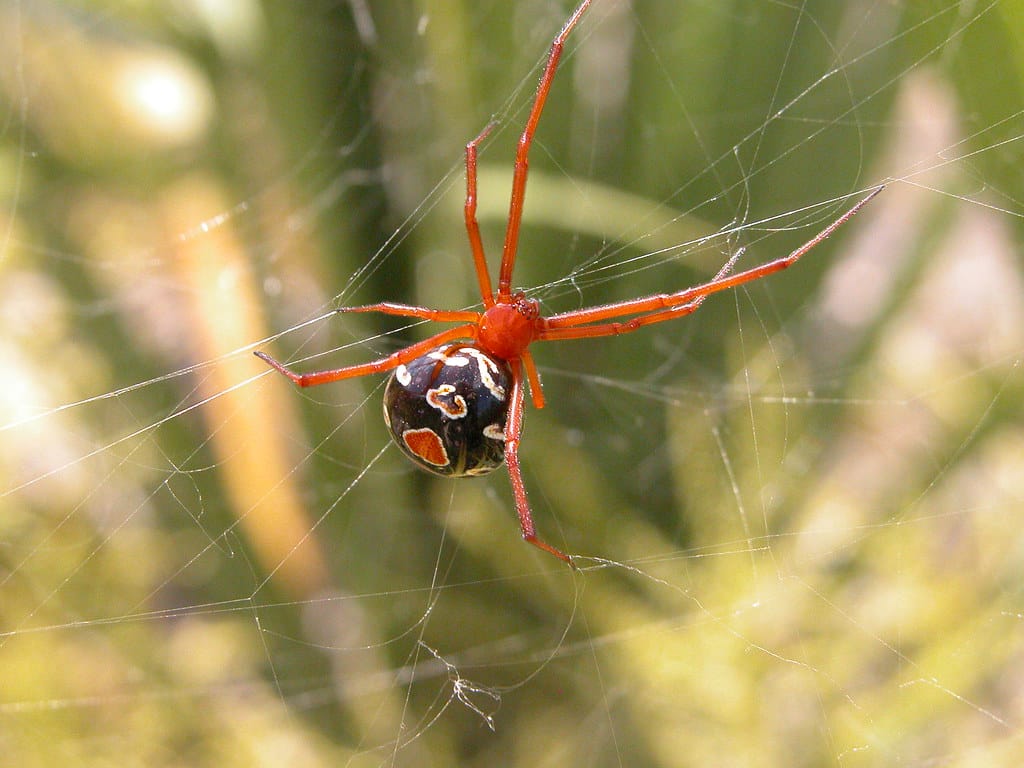Venture into the intriguing world of the Red Widow Spider, a unique inhabitant of Florida’s distinctive landscapes. This captivating arachnid, with its fiery hues and intriguing lifestyle, plays a crucial role in its sandy habitat. Uncover the secrets of the Red Widow, from its appearance and habitat to its life cycle and the conservation efforts aimed at ensuring its survival.
Decoding the Red Widow: Appearance, Habitat, and Lifestyle
The very name “widow” evokes a sense of mystery and perhaps a hint of fear. While the Red Widow spider, scientifically known as Latrodectus bishopi, is a close relative of the infamous Black Widow, there’s no need to panic. This intriguing spider, found exclusively in the Sunshine State of Florida, offers a captivating glimpse into nature’s delicate balance.
These aren’t your average backyard dwellers. Red Widows make their homes in a very particular and increasingly rare environment—the Florida scrub. This unique habitat, characterized by sandy soil and specialized plants like sand pines and saw palmettos, is essential for the spider’s survival. Sadly, as human development expands, the Florida scrub dwindles, placing the Red Widow’s future in jeopardy.
Recognizing a Red Widow is relatively easy, especially the females. Their bodies, known as the cephalothorax, boast a vibrant, fiery red coloration. Their abdomens, a stark contrast in black, are adorned with bright red spots encircled by sunny yellow—a look that likely serves as a warning to potential predators. Male Red Widows, in a stark contrast, are rather drab. Smaller and less vibrant, they depend on camouflage for safety.
Beyond the Bite: Unveiling the Red Widow’s Behavior and Ecological Significance
Red Widows, like many spider species, have a bit of a “femme fatale” reputation. Their venom, similar to other widow spiders, contains neurotoxins, which can be harmful. However, it’s important to note that confirmed bites from Red Widows are quite uncommon. They are not aggressive spiders and will only bite if they feel threatened or if their webs are disturbed.
These spiders exhibit fascinating behaviors, particularly when it comes to motherhood. Red Widow mothers are incredibly devoted, weaving spherical silk sacs to safeguard their eggs and remaining vigilant until their spiderlings hatch. This maternal dedication ensures the survival of the next generation and highlights their vital role in the delicate ecosystem they call home.
But there’s more to these intriguing spiders than their striking appearance. They are essential members of the sand-pine scrub ecosystem, playing a crucial role as skilled predators. By helping to control insect populations, they help to maintain the delicate balance of their habitat.
What Makes Red Widows Unique?
Several characteristics distinguish Red Widows from other spider species:
- Endemic to Florida: They are found exclusively in specific scrub habitats of central and southern Florida.
- Habitat Specificity: Red Widows primarily inhabit sand dunes dominated by sand pine (Pinus clausa).
- Web Structure: Unlike the neat, symmetrical webs of some spiders, Red Widows create irregular, three-dimensional webs, often suspended a few feet above the ground in shrubs.
- Unique Markings: While they belong to the Latrodectus genus, which includes black widows, Red Widows lack the complete hourglass marking on their abdomens. Instead, they often have one or two red dots.
Where Do Red Widows Live?
As mentioned earlier, Red Widows are highly specialized when it comes to their living arrangements. You’ll find them exclusively in Florida’s scrublands, those sun-drenched areas with sandy soil and specific types of plants.
Picture a landscape of rolling sand dunes dotted with sand pine trees—that’s prime real estate for a Red Widow! The pines provide a framework for their webs, which they often spin a few feet off the ground, usually entangled in shrubs like palmettos, rosemary, or scrub oaks. Their webs aren’t small and inconspicuous either; a Red Widow’s web can stretch an impressive distance, sometimes up to 4 feet from where she waits.
Their habitat preference is all about survival. Red Widows have evolved to thrive in the unique conditions of Florida’s scrub habitats. The problem is, these habitats are under increasing pressure from human development.
A Closer Look at the Red Widow’s Life Cycle
The life of a Red Widow begins within a silken sac, spun by the mother to protect her hundreds of tiny eggs. The mother fiercely guards this precious bundle, ensuring her offspring have a chance to survive in the wilds of the Florida scrub.
The spiderlings, upon hatching, are incredibly small, resembling tiny red dots more than spiders. They grow by shedding their skin multiple times in a process called molting. Female Red Widows, the ones with those vibrant crimson colors, take several months to reach their full size. The males, on the other hand, mature quickly but live a much shorter life.
Once mature, Red Widows engage in mating rituals that can be quite complex. While not as well-documented in Red Widows as in some of their widow relatives, cannibalism of the male by the female after mating is a possibility, though scientists believe it might not be as common as once thought.
After mating, the female Red Widow will create more silken sacs, each filled with hundreds of eggs, thus continuing the cycle.
Red Widow Conservation: A Call to Action
The Red Widow, though captivating and ecologically important, faces an uncertain future. Their specialized lifestyle makes them incredibly vulnerable, as the places they call home are under constant threat.
Here’s what we can do to help:
- Protect Florida’s Scrublands: Preserving these unique habitats is crucial, not just for the Red Widow, but for all the plant and animal species that depend on them.
- Support Responsible Land Management: Encourage practices that consider the needs of Florida’s native species, including prescribed burns, which are essential for maintaining healthy scrub habitats.
- Educate Others: Raising awareness about the Red Widow and the challenges it faces can lead to greater understanding and support for conservation efforts.
Protecting these areas isn’t just about saving one species; it’s about conserving a whole web of life. By understanding and appreciating the enigmatic Red Widow, we take a step towards safeguarding a fascinating and irreplaceable part of Florida’s natural heritage.
Internal Links:
If you are curious about which cockroach holds the record for being the largest, you can check out the largest cockroach scientific name to find the answer. Have you ever wondered how much force a lion can bite with? Find out by reading more on lion bite force psi.
- Unlock Elemental 2 Secrets: Actionable Insights Now - April 2, 2025
- Lot’s Wife’s Name: Unveiling the Mystery of Sodom’s Fall - April 2, 2025
- Photocell Sensors: A Complete Guide for Selection and Implementation - April 2, 2025

















2 thoughts on “The Enigmatic Red Widow Spider: Secrets of Latrodectus Bishopi”
Comments are closed.